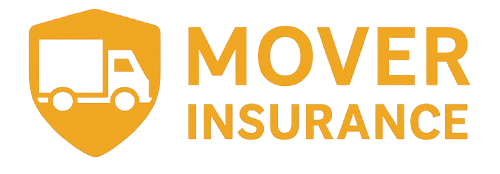
How to Handle Insurance Claims for Moving & Logistics Businesses
How to Handle Insurance Claims for Moving & Logistics Businesses
For moving and logistics companies in California and across the United States, dealing with insurance claims is an inevitable part of operations. Whether it involves damaged cargo, vehicle accidents, or employee injuries, having a clear understanding of how to manage claims efficiently can save time, reduce costs, and protect your business’s reputation.
This article provides a step-by-step guide for handling insurance claims in the moving and logistics industry, outlines best practices, and highlights strategies to maintain compliance and client trust.
Understanding the Importance of Insurance Claims
Insurance exists to protect moving and logistics companies from financial loss, legal exposure, and operational disruptions. However, the benefits of insurance are only realized when claims are filed and managed correctly. Proper handling of claims ensures that:
Damaged or lost property is compensated promptly.
Employees receive timely medical care after work-related injuries.
Liability is addressed efficiently to prevent legal escalation.
Business operations continue with minimal disruption.
Understanding the claims process before an incident occurs is essential for a smooth and stress-free experience.
Common Types of Claims in Moving and Logistics
Cargo and Goods Damage
High-value shipments, fragile items, and specialized equipment are prone to damage during transit. Cargo insurance claims may involve:
Broken or damaged items due to improper handling.
Theft during transport or temporary storage.
Loss caused by environmental exposure, such as water damage or extreme temperatures.
Prompt reporting and proper documentation are critical for successful cargo claims.
Vehicle Accidents
Commercial vehicles are a significant asset for movers and logistics companies. Claims may arise from:
Collisions involving company trucks or vans.
Property damage or bodily injury caused by company vehicles.
Comprehensive or collision coverage claims for vehicle repair or replacement.
Accurate accident reporting and driver cooperation help insurers process claims efficiently.
Employee Injuries
Handling heavy items, loading and unloading trucks, and navigating challenging environments expose employees to injury risks. Workers’ compensation claims cover:
Medical treatment and rehabilitation.
Lost wages for injured employees.
Legal protection against employee lawsuits.
Maintaining safety protocols and documenting incidents is crucial for smooth claims handling.
Liability Claims
General liability insurance addresses incidents that involve third-party property damage or bodily injury unrelated to vehicles. Examples include:
Accidental damage to a client’s office or home.
Injuries sustained by visitors during the moving process.
Legal fees and settlements associated with covered claims.
Timely reporting and cooperation with the insurer help prevent delays and legal complications.
Steps to Effectively Handle Insurance Claims
1. Report the Incident Immediately
Time is critical when filing a claim. Notify your insurance provider as soon as possible, providing details about the incident, parties involved, and the extent of damage or injury. Immediate reporting increases the likelihood of a smooth claims process.
2. Document Thoroughly
Accurate documentation is essential. Include:
Photographs of damaged goods or property.
Police reports or accident reports if applicable.
Statements from employees, clients, or witnesses.
Receipts, invoices, or proof of item value.
Comprehensive documentation strengthens your claim and reduces disputes.
3. Communicate with the Insurer
Stay in regular contact with your insurance provider throughout the claims process. Provide requested documentation promptly, answer questions accurately, and follow up on claim status updates. Open communication helps prevent unnecessary delays.
4. Follow Internal Procedures
Implement an internal claims protocol that outlines:
Who is responsible for reporting incidents.
How documentation should be collected and stored.
Steps for notifying clients affected by the incident.
Having a standardized process ensures consistency and accountability across your organization.
5. Learn from Each Claim
After resolution, review the incident to identify preventive measures:
Update employee training programs.
Improve packaging, loading, or transport practices.
Adjust coverage or policy limits if necessary.
Continuous improvement reduces future claims and enhances operational efficiency.
Best Practices for Minimizing Claims
Invest in Employee Training – Teach proper lifting techniques, equipment handling, and safety protocols.
Maintain Vehicles and Equipment – Regular inspections reduce the risk of accidents and damage.
Use High-Quality Packing Materials – Protect fragile or high-value shipments during transit.
Monitor Compliance – Ensure adherence to California and federal regulations for insurance and workplace safety.
Consider Bundled Policies – A Business Owners Policy (BOP) can streamline coverage, simplifying the claims process for multiple risks.
Benefits of Proper Claims Handling
Financial Protection – Ensures reimbursement for damaged property, vehicle repair, or employee medical costs.
Legal Compliance – Maintains adherence to California state laws regarding workers’ compensation and liability coverage.
Client Trust – Efficient claims management reassures clients that their property and interests are protected.
Operational Continuity – Minimizes downtime and disruption to business operations.
Reputation Management – Professional handling of incidents strengthens your company’s credibility.
Final Thoughts
Efficiently handling insurance claims is a cornerstone of risk management for moving and logistics businesses in California and the USA. From cargo and vehicle incidents to employee injuries and liability claims, following proper reporting procedures, documenting thoroughly, and communicating with insurers ensures swift resolutions and protects both business operations and client trust.
For specialized insurance solutions designed for movers and logistics companies, including cargo, general liability, commercial auto, workers’ compensation, and BOP coverage, visit Western Insurance
BLOG
Related Articles


The Future of Insurance for Movers: Trends to Watch in California

